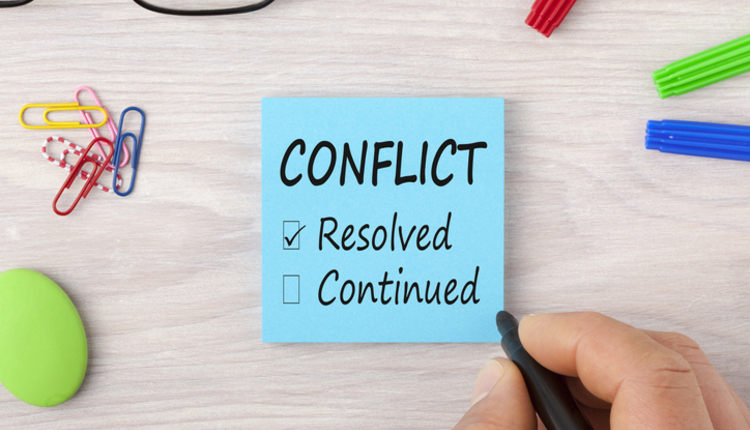Collaboration in business refers to the process of working together with others to achieve a common goal or objective. It is a key component of teamwork and involves sharing knowledge, skills, and resources to achieve success. As we know, collaboration within and among work teams is crucial in today's workplace environment. As work becomes more challenging, complex, and competitive, we must find even better ways to work together to achieve common goals. There is real power when we collaborate well. As soccer great Pele said, “No individual can win a game by himself.” Some of the benefits of collaboration include:
Improved performance. A Stanford study found that people who acted collaboratively stuck at their tasks 64% longer than their solitary peers, while also reporting higher engagement levels, lower fatigue levels, and a higher success rate. Another study by the Institute for Corporate Productivity and Babson College found that companies that promote collaborative working were five times as likely to be high performing!
Helps build resilience. Martin Luther King, Jr. said, “We may have all come on different ships, but we’re in the same boat now.” Collaboration helps our teams be more dynamic and comfortable with change and challenges that come our way. Team members gain experience working with different personality types/styles and learn how to tackle problems together as they arise. We end up with more adaptable and resilient teams, which is key to serving our stakeholders well.
It supports transparency. Building a culture of teamwork and collaboration reduces the number of blind spots in our organization. If everyone works toward similar goals and shares deadlines and milestones to hit, transparency is required to ensure everyone is in the loop and set up for success. This transparency can make people feel plugged into what’s going on in the business and why their roles are essential. In turn, they’ll feel more committed to accomplishing the team’s objectives.
It encourages accountability. When we work as a team, we share the wins — and the losses. Our team members recognize that others depend on them and don’t want to be the reason the team fails to reach a certain goal. People are accountable not just to themselves but to the team and the organization as a whole. As a result, team members take more pride in their work and embrace their share of the responsibilities.
Increased Productivity and Creativity. I appreciate this quote from President Franklin Roosevelt: “I’m not the smartest fellow in the world, but I can sure pick smart colleagues.” Collaboration can lead to increased productivity by bringing together individuals with different skill sets and expertise to work on challenging problems. By working together, individuals can share knowledge and expertise, identify solutions, and develop innovative approaches to problem-solving, leading to more efficient and effective business processes.
Improved employee retention. Collaboration can lead to improved employee retention by fostering a sense of teamwork and collaboration within our teams. When individuals feel like they are part of a team working towards a common goal, they are more likely to be engaged and satisfied in their work, leading to improved retention rates.
Teamwork makes the dream work. I appreciate this quote from Leadership expert John Maxwell: “Teams are incredible things. No task is too great, no accomplishment too grand, no dream too far-fetched for a team. It takes teamwork to make the dream work.”
How Can We Develop Greater Collaboration?
Here are ten practical ideas to help develop greater collaboration within our teams:
1.Be Intentional. A good starting place is to intentionally make a decision to pursue greater collaboration, and then adopt some of the ideas presented below.
2.Set Clear Expectations, Rules, and Roles. One recent study examined the conditions that enabled the most collaborative teams. A key finding was collaboration improved when individual roles were clearly defined (which leads to less envy and protection of turf, and more focus on the tasks). Clarifying expectations and rules also helps our team members know that collaboration is valued and that there are no rules that get in the way of collaborating well.
3.Collaboratively Set Shared Team Goals. Author Idowu Koyenikan wrote, “There is immense power when a group of people with similar interests gets together to work towards the same goals.” One of the most effective ways to promote collaboration among work teams is to establish clear and shared goals. By defining common objectives, people can work together more effectively and stay focused on achieving the desired outcomes. We should also provide our team members with the necessary resources and support to achieve their goals, including access to training, technology, and information.
4.Measure and Reward Employee Behavior. There is the management principle that what gets measured and rewarded tends to get repeated. So as leaders we can ensure that collaboration is built into our measurement systems (e.g., survey questions), and recognized and rewarded both formally and informally.
5.Build Trust and Respect Within the Team. As leaders, we can model showing trust and respect to our team members and set an example (concept of “shadow of the leader”). We can also implement team building activities, such as social events and team building exercises to help foster a stronger sense of camaraderie and teamwork. And let’s not forget the value of having some fun together as this quote from author Robert Orben suggests, “If you can laugh together, you can work together!” Need ideas for potential team building activities? Ask for ideas from our team members.
6.Ensure a Psychologically Safe Environment. Amy Edmondson from Harvard University is considered the world’s leading expert on psychological safety. She explains that team psychological safety is a shared belief held by members of a team that it’s OK to take risks, to express their ideas and concerns, to speak up with questions, and to admit mistakes — all without fear of negative consequences. As Edmondson puts it, “it’s felt permission for candor.”
7.Have Open and Transparent Information Flows. Freely sharing information within our teams (and with key business partners) helps build collaboration and makes people feel valued and appreciated. We can share information via team meetings, brainstorming sessions, online collaboration tools and sharing of reports/documents.
8.Make Decisions Collaboratively as Possible. Whenever possible we should make decisions with input from our team members. Why? The old saying that two (or more) heads is better than one means that the quality of decisions will normally be better when we get perspectives and input from multiple people. Also, when it comes time to implement decisions on the back end our team members are more likely to have buy-in and support if they had input on the front end.
9.Use Technology Wisely.Technology can also play a crucial role in promoting collaboration among work teams. Online collaboration tools, such as shared workspaces, shared data files/directories, and video conferencing, can help to break down barriers and make it easier for employees to work together, regardless of their location. These tools can also help to increase productivity, reduce errors, and improve efficiency.
10.Celebrate Success! When things go well for the team, it is important for us to take the time to celebrate. Remember: success breeds success! There are many ways to celebrate when seeing collaboration working well and experiencing the positive results we seek. We can take pictures, make videos, bring in food, have a fun team event… in addition to the basic yet important verbal and written thank you we express to our teams.
Closing thoughts: I agree with what author Mattie Stepanek once said, “Unity is strength … when there is teamwork and collaboration, wonderful things can be achieved.” Let’s fully tap into the power of collaboration and enjoy the positive results that follow!
Wes Friesen is a proven leader and developer of high performing teams and has extensive experience in both the corporate and non-profit worlds. He is also an award winning university instructor and speaker, and is the President of Solomon Training and Development, which provides leadership, management and team building training. He serves as the Industry Co-Chair of the Greater Portland PCC. His book, Your Team Can Soar! has 42 valuable lessons that will inspire you, and give you practical pointers to help you — and your team — soar to new heights of performance. Your Team Can Soar! can be ordered from Xulonpress.com/bookstore or wesfriesen.com (under Book) or an online retailer. Wes can be contacted at wesmfriesen@gmail.com or at 971-806-0812.
This article originally appeared in the September/October, 2023 issue of Mailing Systems Technology.










